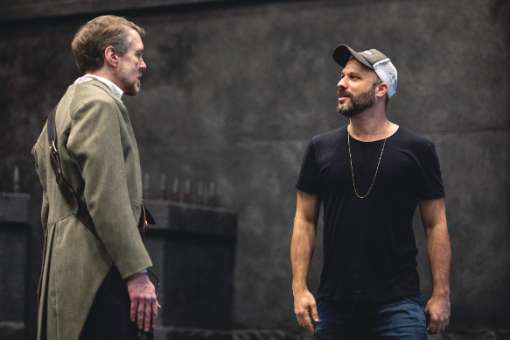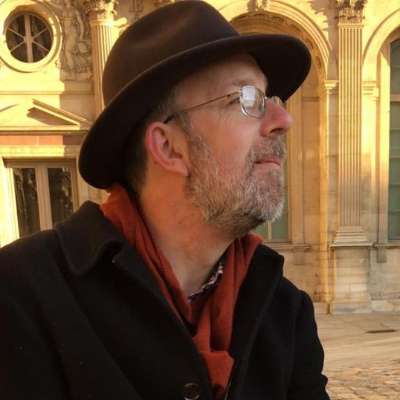Beethoven referred to Fidelio, his sole opera, as his “Sorgenkind” (problem child). It was a work that cost him much heartache, especially when the first version – Leonore – failed so badly at its 1805 premiere at Vienna’s Theater an der Wien. It tells the story of a political prisoner (Florestan) and his wife (Leonore) who disguises herself as a man to rescue him. It seems to start out as a Singspiel – with bags of spoken German dialogue – in the tradition of Mozart’s Entführung or Zauberflöte, with Marzelline and Jacquino having a lovers’ tiff whilst she does the ironing. But before long it turns into something very different by the quartet “Mir ist so wunderbar” whose radiance seems to anticipate the Adagio of Mahler’s heavenly Fourth Symphony nearly a century later.
This anniversary year sees a number of new productions of Fidelio – or its Leonore precursor – in major opera houses or festivals, including stagings by Tobias Kratzer for The Royal Opera, Frederic Wake-Walker for Glyndebourne and Amélie Niermeyer (Leonore) at the Wiener Staatsoper. It’s an opera that still attracts its fair share of criticism, so how do these three directors view this “problem child”? And how do they plan to address the opera’s inherent problems?
“The piece starts off pretending to be an 18th-century number opera,” explains Wake-Walker, “then it tries to become a sung-through melodrama before ending up looking like a choral symphony. Rather than trying to squeeze the piece into a neat, uniform and linear arc, my approach is to make a virtue of its fragmentary nature and treat each section on its own terms.”
According to Niermeyer, the main challenge “is to devise a smooth and consistent transition from the Singspiel-part to the grand rescue opera. Finding an appropriate segue is a tall order for every director.” The original version she directs, Leonore, contains more music in Act 1, notably a duet and a trio. “The Singspiel-part between the protagonists is much more elaborate than in his later revision. I love Leonore’s aria in the original. But the finale is a bit more dramatic and political in Fidelio.”
Kratzer wouldn’t call it a “problem work”, arguing that “Fidelio is probably the first opera in the history of the genre to experiment with the form and premises of opera itself to communicate a higher (that is, a highly personal and highly political) message.” For him, Beethoven pushes the operatic structure to its limit, resulting in a work of two very different halves. “The first act is an historical melodrama about love and personal fulfillment in post-revolutionary times. The second act is a political essay about the responsibility of the individual: a timeless appeal for empathy! My task as a director is therefore not to "solve" a problem, but rather to make the special structure of this opera visible to the audience – and try to make what might be considered a weakness of the piece a strength of its own.”
All three directors find the dialogue problematic. “Where the overall structure of the piece is an opportunity, the spoken dialogue is an insurmountable problem,” says Wake-Walker. “The archaic language is ridiculous also for a German-speaking audience; the clunky conversation leaves the characters appearing two-dimensional and there is no attempt to cover up the gaping holes in the backstory.”
“The dialogues tend to be heavy-handed,” agrees Kratzer, “sometimes dramaturgically awkward and their artistic quality is not on the same level as the music.”
So how will they tackle the dialogue? Largely by scrapping it! Wake-Walker replaces the dialogue with new text and introduces a new character “who connects with Leonore’s story across time and space which offers an exciting opportunity to reframe the piece, amplifying the themes that speak most pertinently to us today”.
It’s an approach Niermeyer also takes in Vienna. “We decided to strengthen and vitalise the dialogue. We commissioned the author Moritz Rinke to write an inner dialogue for Leonore which is divided between the singer and an actress. This makes her a more complex and also a much more identifiable character.”
Although Kratzer retains most of the original language, he has “restructured” the spoken scenes “to create theatrical situations out of them” and made “massive cuts” to the dialogue. But he has also compensated by adding extra text. “I've woven lines by Beethoven's contemporaries, the great German playwrights Georg Büchner and Franz Grillparzer, into the fabric of the text,” he explains, “to raise the artistic quality of the dialogue, and to give more dimension to the characters. Beethoven always wanted to have Grillparzer write a libretto for him – a wish that was never fulfilled. So the addition of Grillparzer’s lines to Fidelio is also my personal birthday present to the composer.”
Napoleon was laying siege to Vienna when Leonore was premiered in 1805 and the opera’s political themes of freedom, brotherhood and justice are just as pertinent today. Beethoven’s source was a French libretto by Jean-Nicolas Bouilly, which was alleged to have been based on a true story witnessed during the Reign of Terror, but Bouilly found it safer to move the action to Spain instead. Are the directors, then, setting the opera in period, or giving it a contemporary update?
Perhaps in deference to Marie-Antoinette, Kratzer seems to want to have his cake and eat it. “The opera is so closely linked to the times of the French Revolution and especially to the years of terreur that followed directly afterwards, that we've decided to establish the central conflicts "in period". Not because the themes of the piece would be historical,” he tells me, “but rather because the times Beethoven lived through were the birthplace of fundamental timeless ideals: Liberté, Égalité and Fraternité. The second act goes beyond this period/ contemporary distinction and refers to any public's behaviour towards political oppression and suffering, no matter what time and place.”
Wake-Walker prefers not to think of these terms of “period” versus “contemporary”, attempting to align these two worlds. “A specific characteristic with Fidelio is that the themes are not simply to be inferred from the story and the setting. By the end, it feels as though Beethoven has left the detail of the story and setting behind and that the huge universal themes (of freedom, justice, love, etc) have become the story itself. A production that is too rooted in a specific time of political oppression would struggle to embody the pure universality of the denouement.”
Niermeyer shifts the action firmly to the 21st century. “There are a number of countries in Europe where freedom of speech and expression are in great danger,” she argues, “Hungary and Turkey, to name just two. Citizens who voice concerns with regards to the present political climate in their home state or journalists and artists who dare to criticise those in power are imprisoned. This is happening on a daily basis.”
“The appeal of Beethoven’s music is unlikely ever to weaken,” says Niermeyer. “The strength of his music is immense. Also the themes he addresses in Fidelio, first and foremost the suppression of freedom, could not be more topical – again something which is unlikely to change. His plea for an enlightened and just society is timeless. It is and will remain to be something worth striving for.”

“Knowing that empathy is the key, is one thing,” says Kratzer, “but acting according to this understanding is a challenge that has to be faced every day anew.”
“For me,” says Wake-Walker, “the piece is ultimately about hope. A hope that believes in justice and freedom, in a radically changed world. But also a hope that rises inexplicably out of deep despair, loneliness, alienation and oppression. Filled with this hope – or dare I say, faith – Leonore is ready to fight for something and someone she loves more than anything, even her own life.
“As long as there is a need for this hope in the world, Fidelio and Beethoven will always speak directly to us.”


